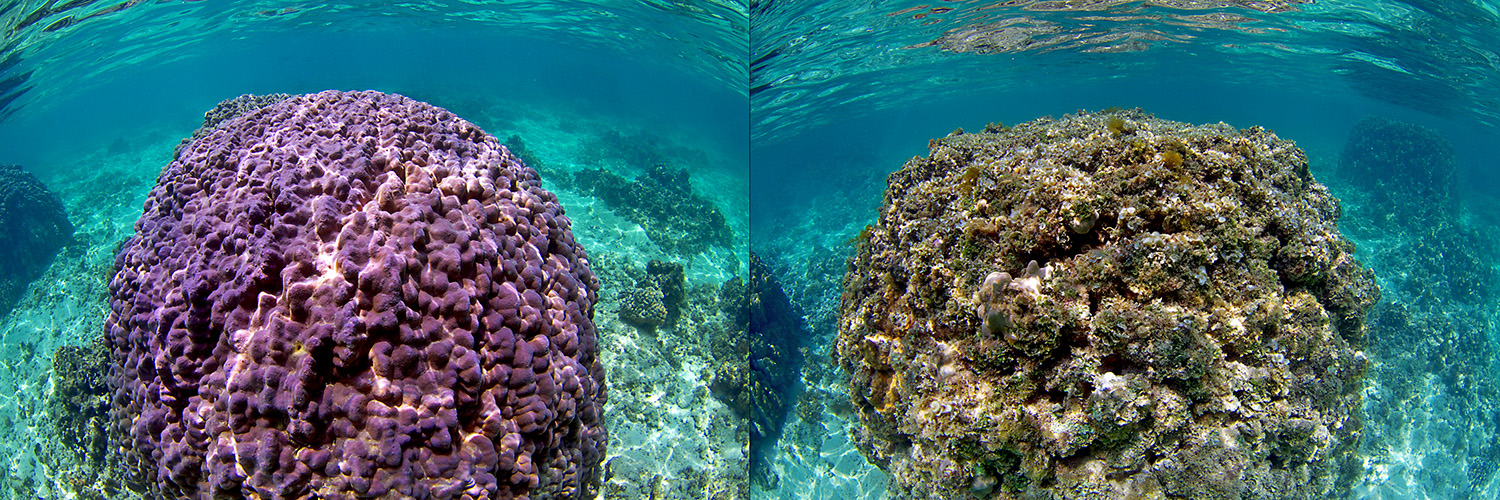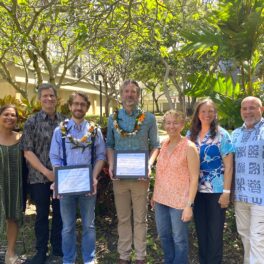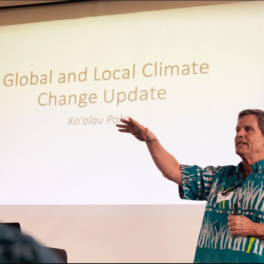Advances in mapping human and natural drivers of Hawai‘i reef health
 Composite showing healthy reef and degraded reef. Credit: Keoki Stender, Marine Life Photography
Composite showing healthy reef and degraded reef. Credit: Keoki Stender, Marine Life Photography
Hawaii Institute of Marine Biology affiliates and SOEST alumni contributed to a recently published study that produced the first-ever comprehensive map documenting the relative impact of human activities and natural events in slowing reef recovery after extreme coral bleaching caused by rising water temperatures in Hawai‘i. The researchers from the collaborative Ocean Tipping Points project reviewed a decade of data to gauge how a broad suite of factors, such as sedimentation, development and fishing, influence coral reef health across the main Hawaiian Islands.
The study appeared March 1 in PLOS One. It reveals variations in what was inhibiting reef recovery across the islands. On the densely populated island of O‘ahu, for example, the dominant stressors were human activities, such as fishing and loss of natural habitat to coastal development. Sedimentation and nutrient run-off were dominant forces on less populated islands.
The research team’s findings highlight the importance of tailoring strategies based on location to effectively address local impacts.
The study, a large, multi-institution collaboration between Stanford, UH, Stockholm Resilience Center, NOAA, and others, synthesized 10 years of datasets from university and government sources across many factors for the first time to get a big-picture perspective on reef health and regional impacts, provide a foundation for further research and inform policies to protect coral reefs.
Read more at CTAHR news and UH News.



